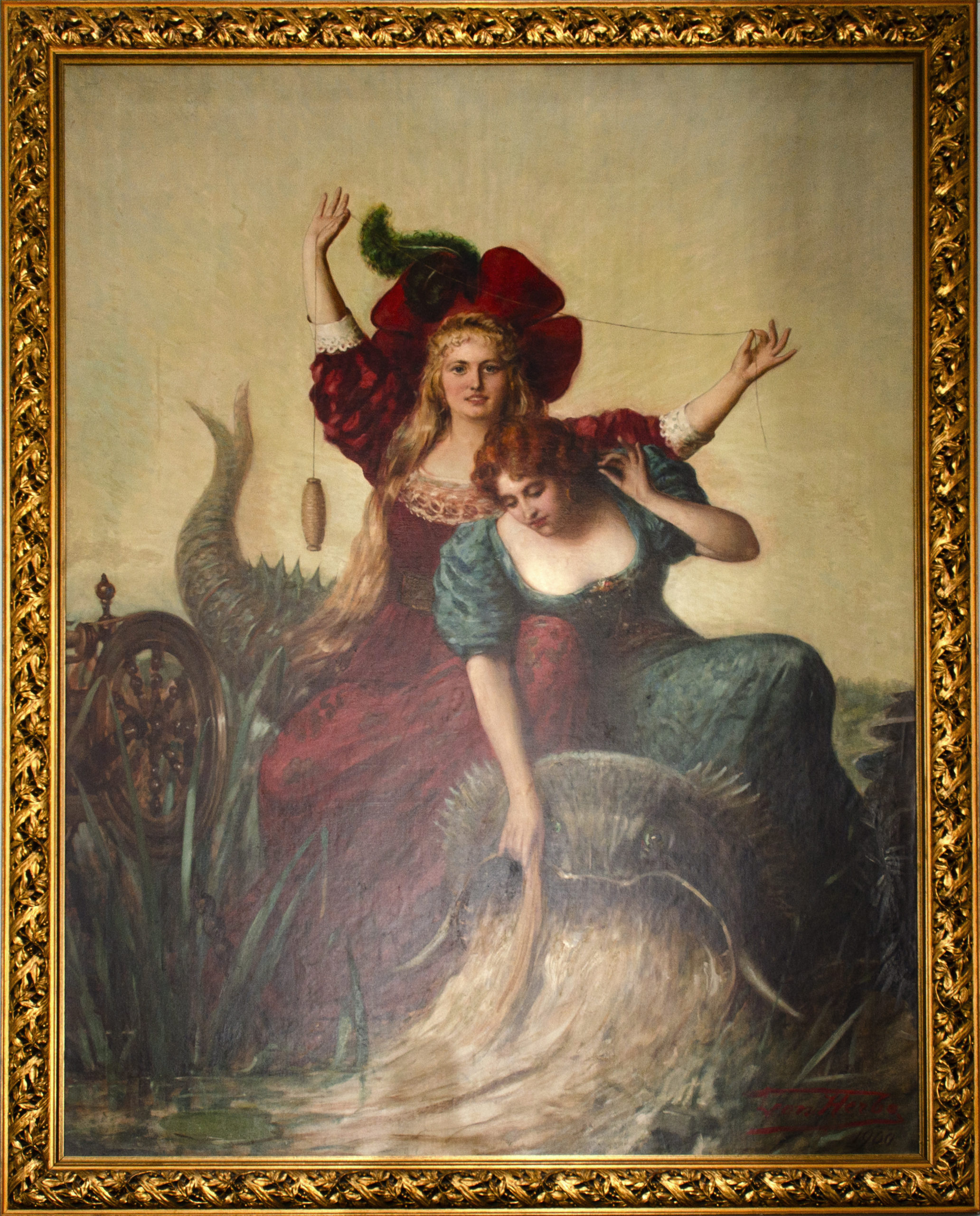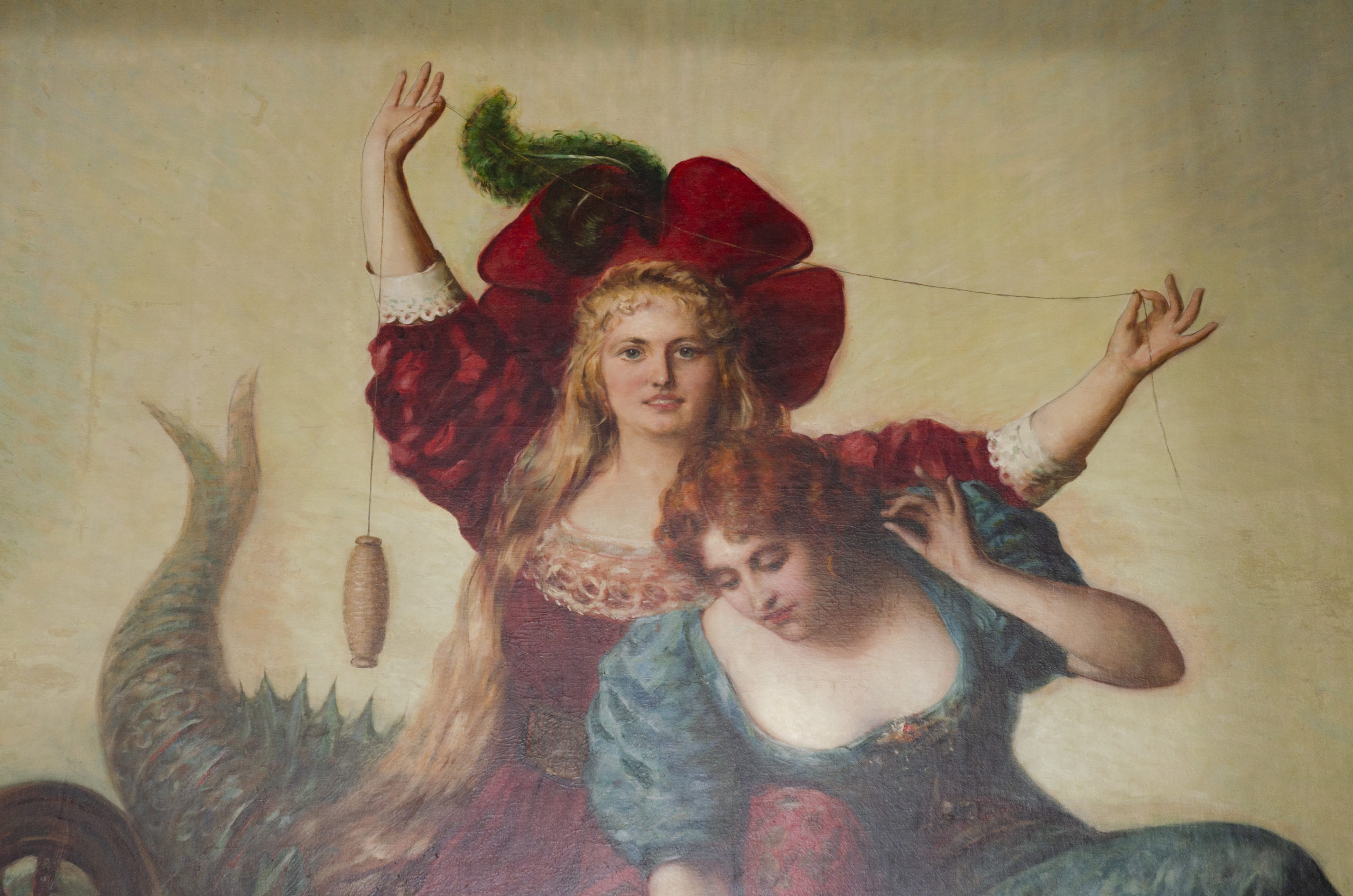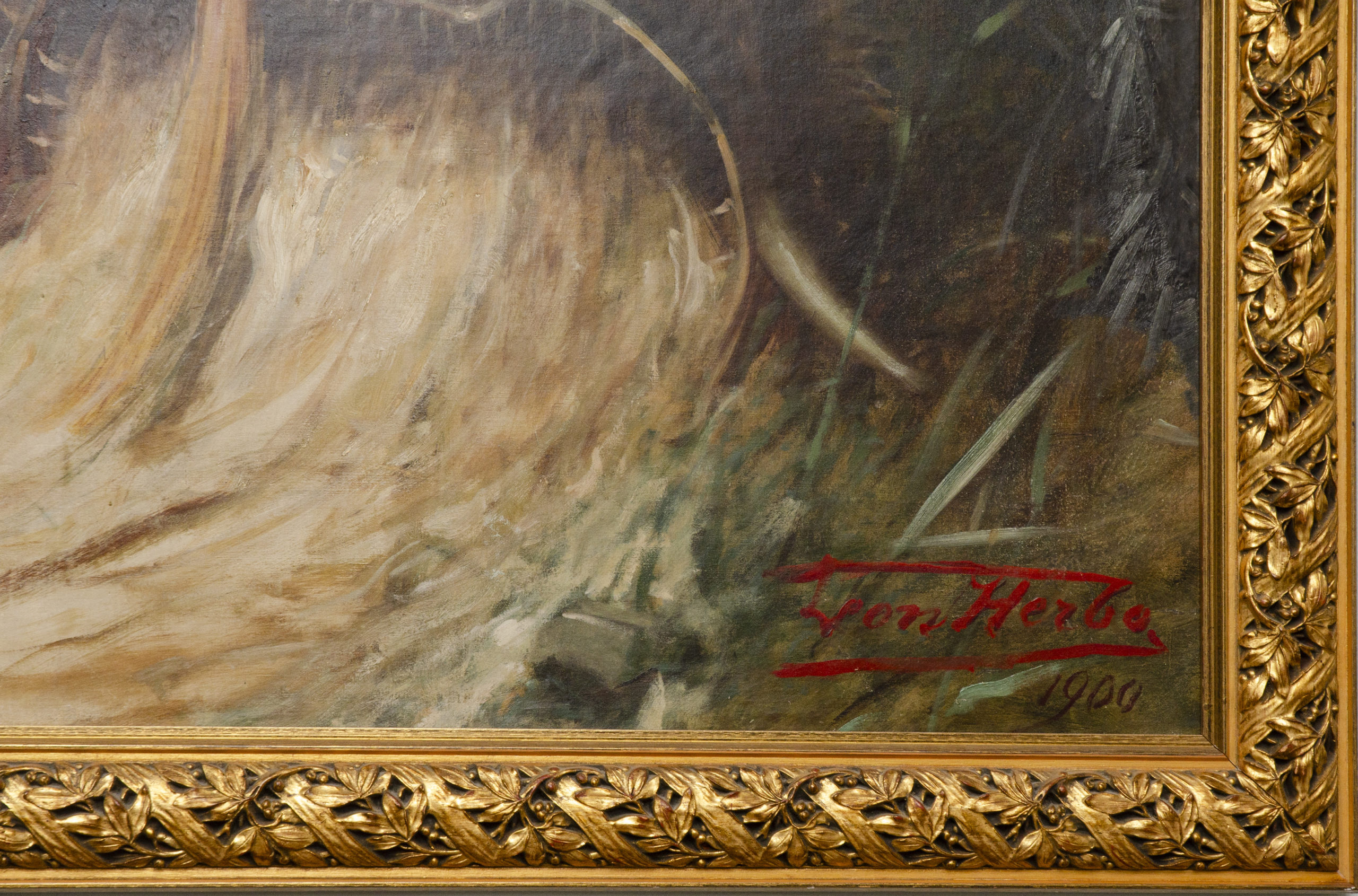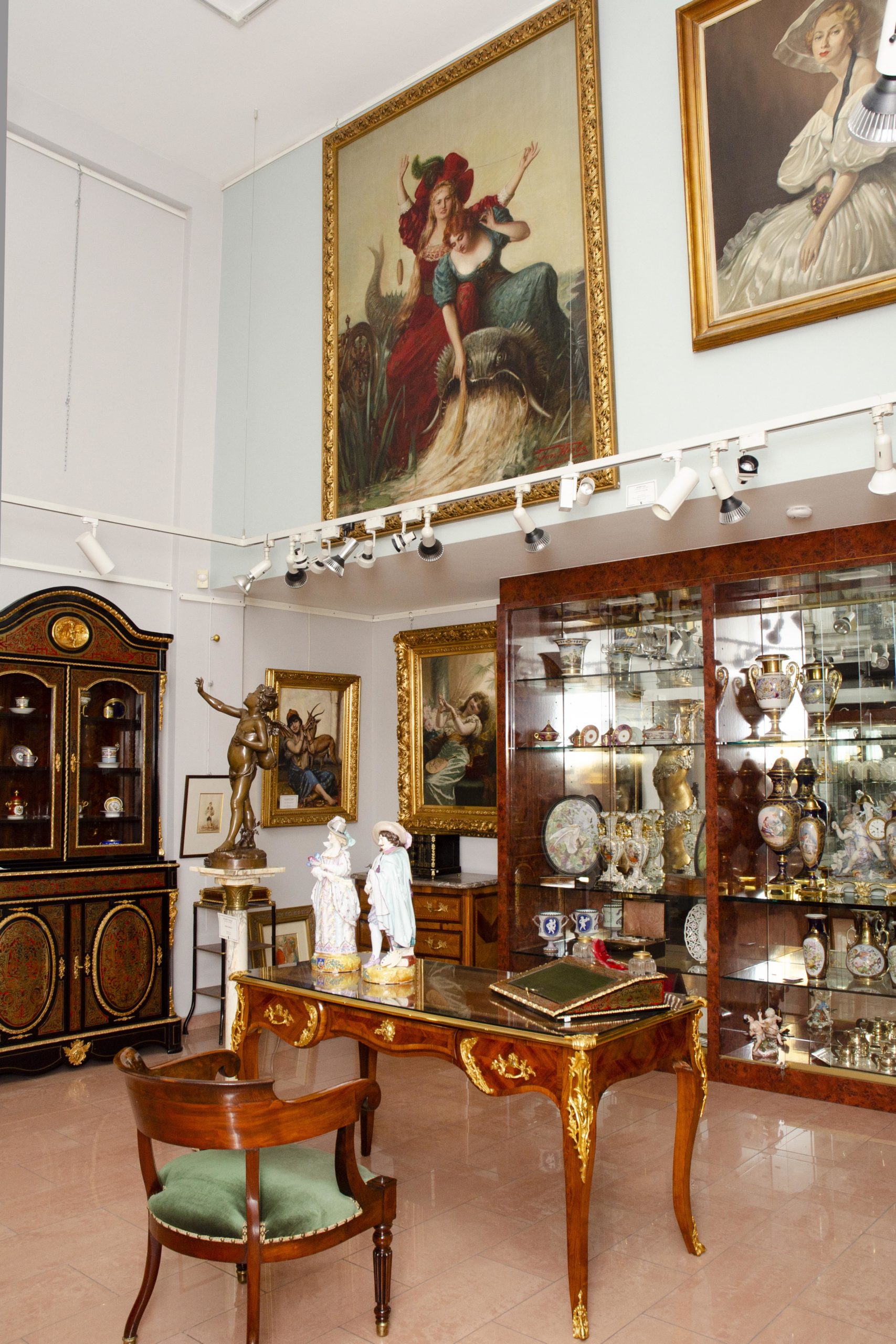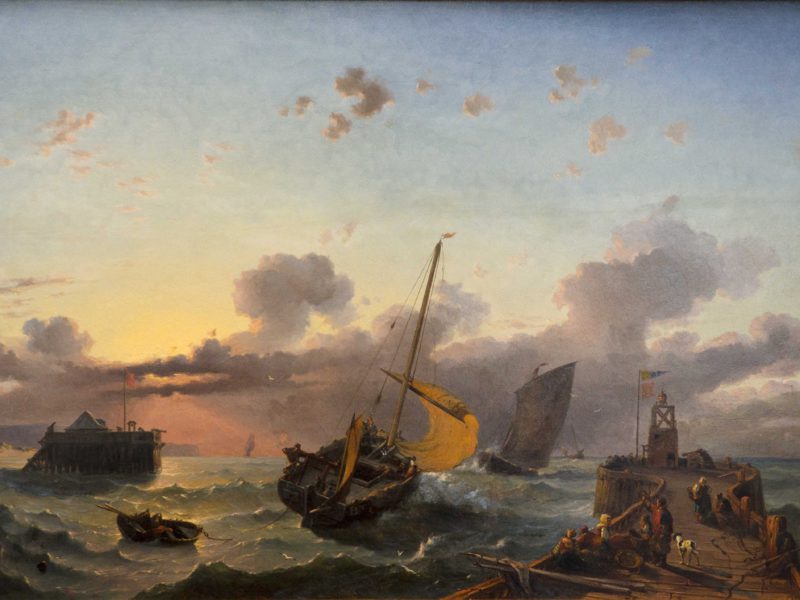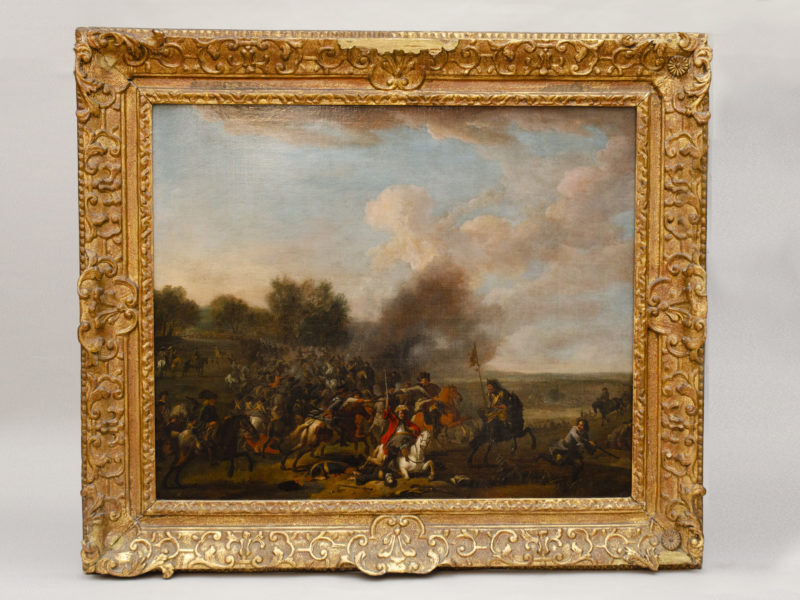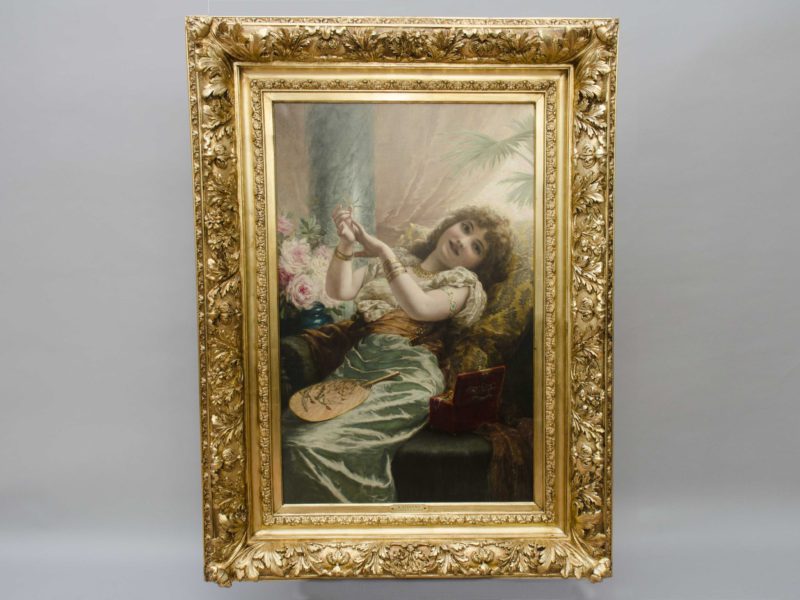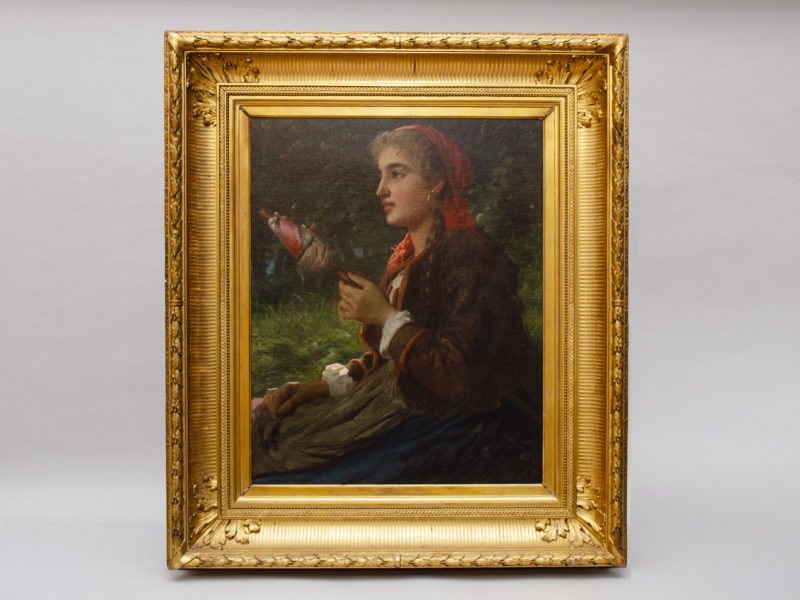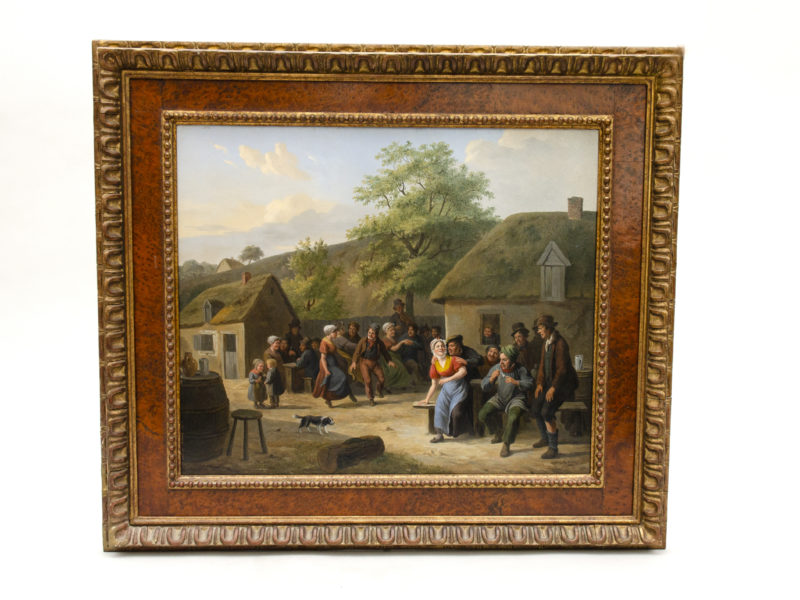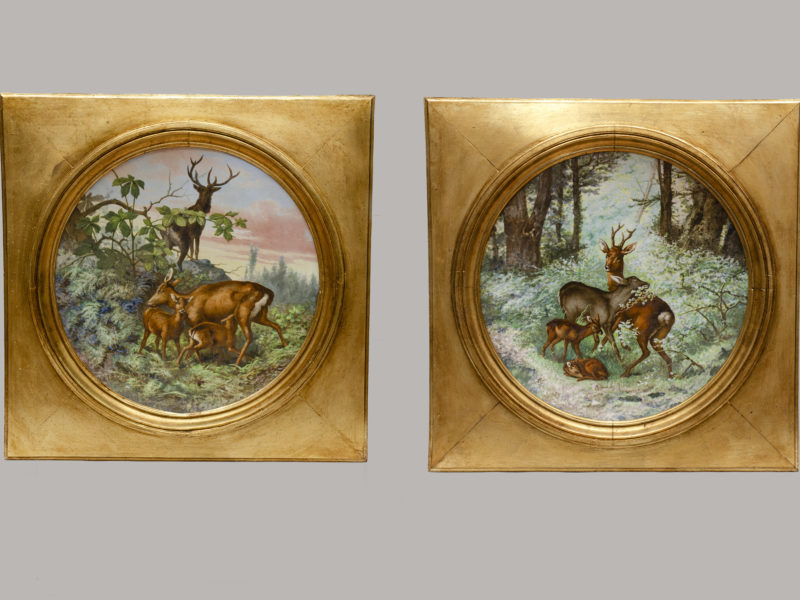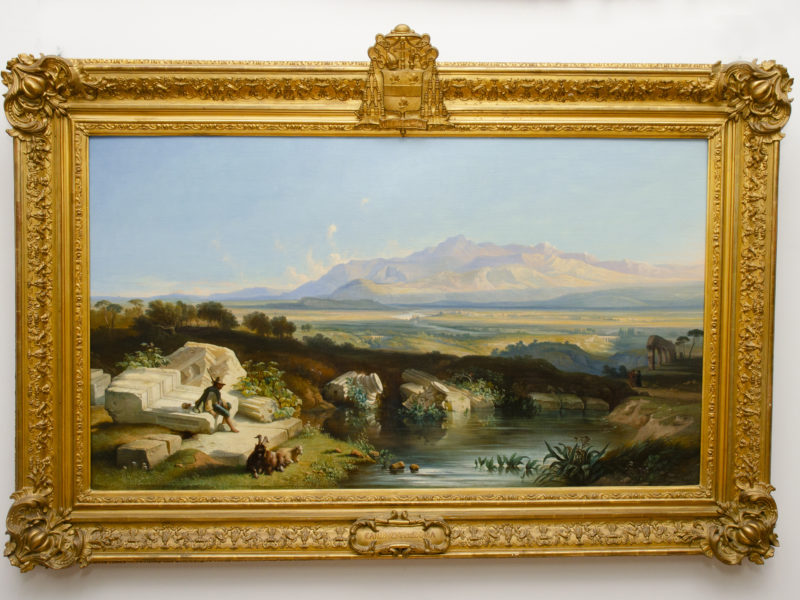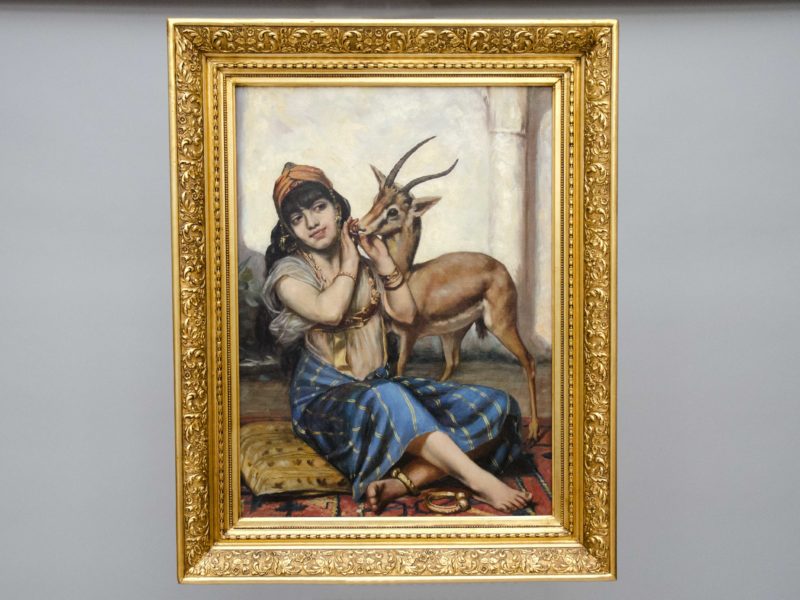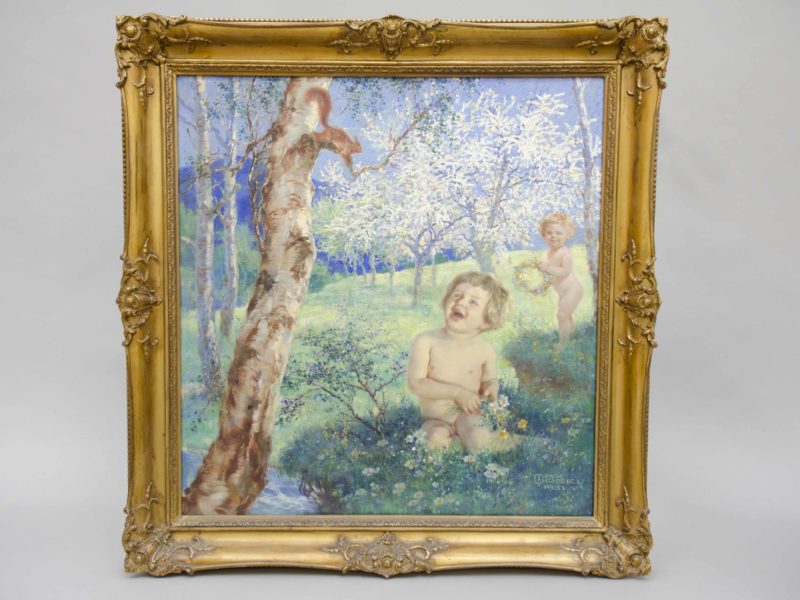“The Lys River and the Linen”, Herbo Leon (Templeuve 1850- Brussels1907)
Price on request
In stock
Contact usVery large oil on canvas depicting two young ladies as allegories of the River Lys and the work of retting the flax. Signed and dated 1900 lower right. Beautiful open worked original frame with ribbon and leaves. One of the most beautiful and impressive works of the artist.
Size: H 222 cm x W 166 cm – H 242 x W 186 cm
Belgian school, dated 1900.
Lit: “Flanders will never fall into poverty as long as it trades in linen”. Charles V
In the Middle Ages, Courtrai’s cloth was less renowned than that of other Flemish towns. But when England banned foreign cloth during the Hundred Years’ War, weakening neighbouring towns, flax came to the rescue of the farmers of the Lys region. Cultivated since ancient times, it is the second most important textile produced in Europe after wool. For a long time, every farm in southern Flanders, no matter how small, produced flax, a plant that provided work for the farmer and his wife throughout the year (planting, harvesting, retting, etc.). Until the beginning of the 20th century, this process was carried out in river water, and the Lys, with its slow flow and relative purity, was ideal. During the retting period, the water in the Lys took on a golden hue, and English merchants renamed it “the Golden River”.
Lit: Leon Herbo was a Belgian genre and portrait painter, born in Templeuve in 1850. A pupil of Legendre and Stallaert at both the Academies of Tournai and Brussels, Herbo mastered the art of fine detail. He then continued his studies in France, Germany and Italy before returning to settle in Brussels. His debut exhibition was in 1875, and he took part in exhibits throughout Europe. He was a prolific artist and it is believed that he produced over 1200 paintings during his lifetime. In 1876, Herbo, Julien Dillens and Emile Namur founded” L’Essor”, the Belgian realist school. The group’s members were concerned with realism, each of them, however, finding their own style and emphasizing their varied personalities. The Brussels based group organized annual exhibitions from 1876 – 1881, as well as later exhibitions for its members in Ostende, Antwerp and London. In 1891, on the group’s 15th anniversary, the “Essorians” opened at the Brussels Museum with a historic retrospective exhibition of the works of their founding members; among them were a number of works by Herbo.
In 1889 Herbo received an Honorable Mention at the Universal Exposition in Paris and was made a Knight of the Order of Leopold. He continued working in Brussels and began teaching at the Academy, where he would soon take over as Director. He died in 1907.
In stock
Contact us